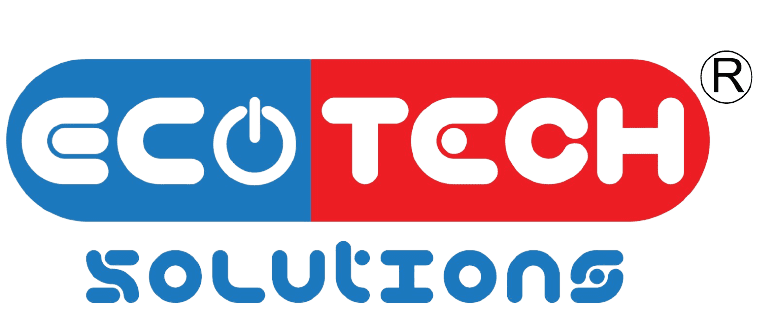Domestic heat pumps are an energy-efficient solution for heating and cooling homes, reducing energy bills while maintaining comfort. With rising energy costs, optimizing your heat pump’s performance is essential. In this guide, we’ll explore 12 proven domestic heat pumps strategies that enhance efficiency, lower costs, and extend system lifespan.
1. Choose the Right Size Heat Pump for Your Home
One of the most important factors in ensuring domestic heat pump efficiency is selecting the correct size. A unit that’s too small will struggle to maintain a comfortable temperature, while an oversized system will cycle on and off too frequently, increasing wear and energy consumption. Consulting an HVAC specialist for a heat pump sizing guide ensures you get the best heat pump for home heating based on square footage, insulation, and climate conditions.
2. Optimize Thermostat Settings for Maximum Efficiency
Using a smart thermostat with your domestic heat pump can lead to significant energy savings. These devices allow you to set schedules that adjust temperatures when you’re away or asleep, preventing unnecessary heating or cooling. For the best results, experts recommend keeping your home at around 20°C in winter and 24°C in summer, as extreme settings force the system to work harder. Investing in the best thermostat for heat pumps ensures seamless integration and automation.
3. Regular Maintenance for Peak Performance
Keeping your domestic heat pump in top condition requires a heat pump maintenance checklist that includes monthly filter cleaning, checking refrigerant levels, and inspecting coils for debris. While some tasks can be handled as DIY heat pump servicing, scheduling professional HVAC maintenance at least once a year helps detect potential issues early, improving longevity and efficiency.
4. Improve Home Insulation to Reduce Heat Loss
A well-insulated home minimizes energy waste, allowing your domestic heat pump to operate more efficiently. Simple upgrades like sealing gaps around windows, adding attic insulation, or installing double-glazed windows can significantly reduce heat loss. For those living in colder climates, investing in the best insulation for heat pump homes ensures consistent indoor comfort without overworking the system.
5. Utilize Zoned Heating for Better Control
Zoned heating systems provide greater control over your home’s temperature by allowing different areas to be heated independently. This approach, often used with smart zoning for heat pumps, ensures that unused rooms aren’t unnecessarily heated, improving overall domestic heat pump efficiency. Installing multiple thermostats or dampers in ductwork can help achieve this setup.
6. Keep the Outdoor Unit Clear of Debris
The outdoor component of your domestic heat pump requires proper airflow to function efficiently. Regularly clearing leaves, snow, and dirt from around the unit prevents airflow blockages. Experts recommend maintaining at least two feet of clearance on all sides to ensure optimal performance. Additionally, placing the heat pump condenser in a shaded area can help reduce strain during hot weather.
7. Use a Heat Pump in Conjunction with Solar Panels
Combining a domestic heat pump with solar panels creates a highly sustainable heating solution. Since heat pumps run on electricity, pairing them with solar-powered energy systems can drastically cut energy costs. Many homeowners find that this setup not only reduces bills but also qualifies for government grants for renewable heating.
8. Avoid Frequent Temperature Adjustments
Constantly changing your thermostat settings forces the domestic heat pump to work harder, increasing wear and energy consumption. Instead of making drastic adjustments, maintaining a steady temperature helps the system run more efficiently. If you’re looking for the ideal heat pump temperature settings, experts suggest minor tweaks rather than large swings.
9. Upgrade to an Inverter-Driven Heat Pump
Modern inverter-driven heat pumps adjust their speed based on demand, providing consistent heating or cooling while using less energy. Compared to traditional models, these systems offer smoother operation and better efficiency, making them a smart choice for homeowners seeking the most efficient heat pump models available.
10. Install Underfloor Heating for Even Distribution
Underfloor heating systems complement domestic heat pumps by distributing warmth evenly across rooms. Unlike radiators that create hot and cold spots, hydronic underfloor heating works at lower temperatures, improving overall efficiency. This method is particularly effective in well-insulated homes, reducing the need for high thermostat settings.
11. Use Ceiling Fans to Improve Air Circulation
Ceiling fans can enhance the performance of your domestic heat pump by improving air circulation. In winter, setting fans to rotate clockwise pushes warm air downward, while in summer, a counterclockwise rotation helps cool rooms more effectively. Choosing the best fans for heat pump homes ensures optimal airflow without overloading the system.
12. Consider Government Grants and Incentives
Many regions offer heat pump rebates and incentives to encourage energy-efficient upgrades. These programs can significantly reduce installation costs, making domestic heat pumps more affordable. Checking local government grants for renewable heating can help offset expenses while promoting sustainable home heating.
Conclusion
Implementing these 12 proven domestic heat pumps strategies can significantly enhance efficiency, lower energy bills, and extend system longevity. Whether optimizing thermostat settings, improving insulation, or pairing with solar energy, each step contributes to a more sustainable and cost-effective home heating solution. Invest in these methods today to maximize the benefits of your domestic heat pump.
Contact Us: EcoTech Solutions


